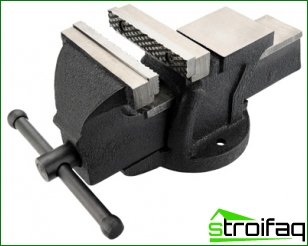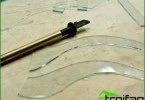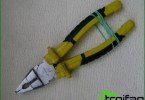The vice is a bench-mounting tool, due to which the work is greatly facilitated, and the necessary conditions are also provided. With the help of a vise, objects that need to be processed are fixed in the required position. The scope of use of the vise is quite wide: they are used in wood processing, in electrical work, etc. let’s get a look, how to choose a vice.
Varieties of machine tools
To fix objects in a vise, a special rotating screw is used, which, by rotating the handle, is set in motion or by pneumatic action. Today, the most common are simple bench or mechanical machine vice. Depending on the design, the bench vice is rotatable and non-rotatable.
On sale there are modernized bench vice, with which you can clamp in the vertical position of the workpiece of large length. This hand tool has a larger anvil, while the base of this tool can rotate 360 degrees. Sometimes you can meet special vices with prisms of the case, which allow you to firmly fix the round workpiece. They are most often used with a slider..
The vice is a bench-mounting tool, due to which the work is greatly facilitated, and the necessary conditions are also provided. With the help of a vise, objects that need to be processed are fixed in the required position. The scope of use of the vise is quite wide: they are used in wood processing, in electrical work, etc. let’s get a look, how to choose a vice.
Varieties of machine tools
To fix objects in a vise, a special rotating screw is used, which, by rotating the handle, is set in motion or by pneumatic action. Today, the most common are simple bench or mechanical machine vice. Depending on the design, the bench vice is rotatable and non-rotatable.
On sale there are modernized bench vice, with which you can clamp in the vertical position of the workpiece of large length. This hand tool has a larger anvil, while the base of this tool can rotate 360 degrees. Sometimes you can meet special vices with prisms of the case, which allow you to firmly fix the round workpiece. They are most often used with a slider..
To work with high rigidity materials, a machine vice is used. They do not have such a large height of the jaws for clamping, moreover, their design is more rigid than in locksmith counterparts. Machine tools allow you to perform operations such as drilling, milling, planing and many others. With their help, you can reliably fix the workpiece at the required angle, and in the process of work rotate around a vertical axis.
Often in working with a vice, a rotary base is used, which serves to secure the tool itself. But this can affect the rigidity of the entire structure in the direction of reduction, therefore, if a decision is made to use a rotary base, then only as an exception.
What is important to consider when choosing a vise
If the machining of the parts is quite complicated, a special configuration of the machine vice may be required – a sinus vice. These vices are two-position or three-coordinate. With their help, it is possible to reliably fix objects with a slope in three or two mutually perpendicular planes. Today on the market you can find double machine vice, used simultaneously for processing several workpieces. But these types of clamping devices are not so often used. Dimensions of carpentry and locksmith machines may vary..
If you want to choose vise in the right way, it is important to understand that when choosing machine and locksmith types it is important to consider the types of materials that will be processed on them, as well as those tools that will be used for this. In addition, it is important to pay attention to the study of the strength indicators of those elements that will be fixed in the clamping devices, and on the quality of the materials that were used to make the vice.







